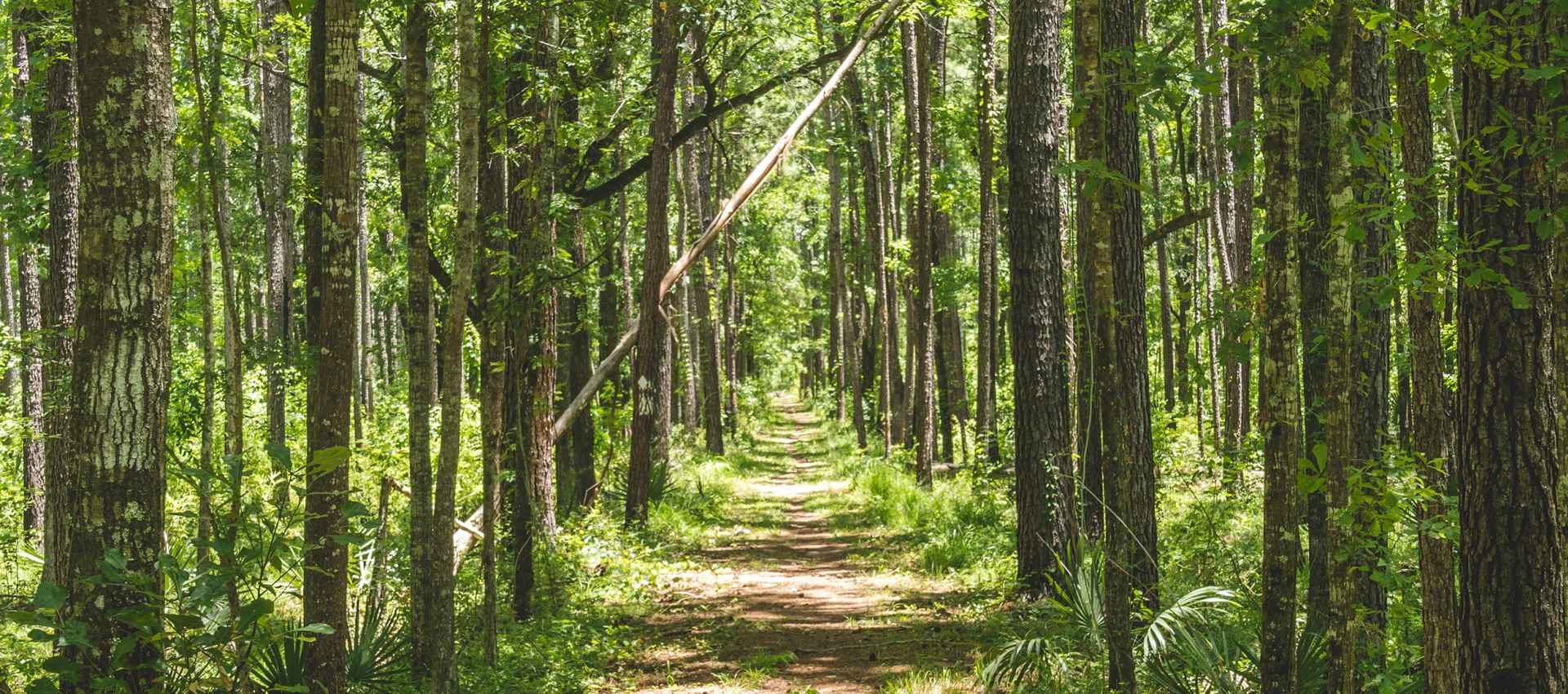
Tour: Francis Marion National Forest / Palmetto Trail Discovering the diversity of South Carolina
- Character:
- Moderately difficult hike
- Start of the tour:
- Trail entrance near Awendaw
- End of the tour:
- Trail entrance near Awendaw
- Duration:
- 04:15 hours
- Distance:
- 20 km
- Ascent:
- 122 m
- Equipment:
- Sturdy footwear, hiking clothes

SIRKOS EVO GTX LO Ws
The Palmetto Trail was established in 1994 – that is at least part of it was. More than 600 kilometres of the 800 kilometre trail have been completed (as at: 2022). It will connect South Carolina and national parks, historic sites from the American Revolutionary War, trails used by indigenous people and cities for hikers and backpackers.
You can get a feel for the trail at the Buck Hall Recreation Area on the Atlantic coast. It is the southeastern starting point of the Palmetto Trail. You pass by Awendaw, where the Swamp Fox Passage (the well-known hideout of the Revolutionary War hero Francis Marion, the Swamp Fox himself) has been integrated into the trail. You can then walk 75 kilometres through the Francis Marion National Forest to Lake Moultrie. This is a two- to three-day hike during which you will hardly encounter any other people at all and will find drinking water at only one site.
But there is also a shorter alternative: the approximately 10 kilometre hike that runs from the entrance near Awendaw to the Halfway Creek Campground. The dirt path will initially take you through thick beds of reeds, some of which rise up to 3 metres into the sky. It then runs straight as an arrow for kilometre after kilometre along an old train track. The surrounding forest is brilliant green, even though the creek beds are dry as powder. You make friends with butterflies, woodpeckers, lizards, dragonflies and cobwebs as you work your way along the occasionally monotonous trail that leads through stands of ancient longleaf pines that are broken up by hardwood wetlands and swamps as well as evergreen brushwood-covered moors. Over and over again, you encounter one other tree as well: the Palmetto palm tree that the state is named after. It is a tree that makes its home near the coast or in savanna-like settings. It also tolerates flooding quite well. The trail will certainly take on a completely different character if it rains. Be sure to take the right gear with you. We feast our eyes on a tiny treasure when we reach Halfway Creek: one of the 25 Carolina bays found in the 105,000-hectare Francis Marion National Forest.
